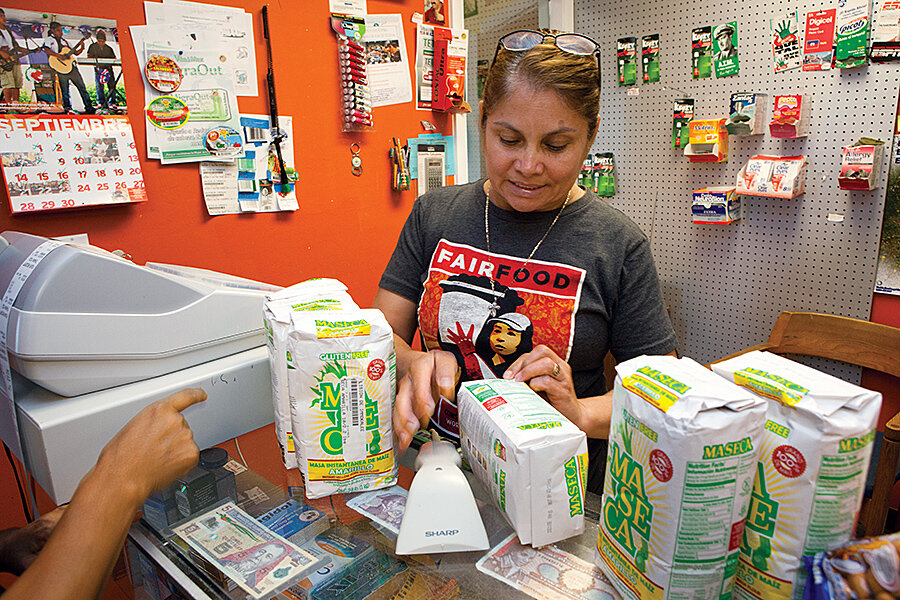The back story of what we buy
Loading...
Until recently, most of us didn’t give much thought to the origin of the shrimp we tucked into, the supermarket tomatoes we toted home, and the shirts, shoes, and 10,000 other consumer goods that were cheaper, more abundant, and more distantly sourced year after year. Few “made in” tags surprised us: Vietnam, Jordan, Uzbekistan. Hey, in a few years, who knows: Cuba, Iran?
As the global bazaar expands, we’re also learning to follow the supply chain. Was a fair price paid to the coffee farmer? Is that chocolate from a humane plantation? Were environmental conditions, health and safety guidelines, and at least minimal labor standards met for making this cellphone? Not everybody checks off all the boxes, but most people are aware that there is a back story to what they buy.
While some economists are skeptical about the ability of people to shop their way to a better world, the fair trade and ethical consumption movements have now jumped from the Whole Foods and Equal Exchange niches to the Kroger and Wal-Mart mainstream. Companies are more concerned about their suppliers, knowing that their brand can be tarnished if they are connected to a distant sweatshop or a shoddy component-maker.
Still, a troubling underworld persists in the world marketplace. One of the most arresting quotes in a Stephanie Haines article on human trafficking (click here) is that “almost everyone in the US owns some product likely made with slave labor.” We’re not talking low-wage jobs or stingy benefits. We’re talking outright human bondage.
Some modern slavery is the age-old kind – brutally imposed by the strong on the weak. There are parts of the world where people are abducted and forced into prostitution, turned into child soldiers, or pressed into menial labor. More often, however, slavery occurs when desperate workers are tricked into signing labor contracts and are kept in servitude by debt bondage and the threat of being turned over to immigration authorities. A Monitor series (click here) highlights the many efforts under way to defeat that slavery.
Human smuggling dominated the headlines in 2015. It was at the center of the refugee crisis in Europe and the immigration debate in the United States. Millions of migrants a year turn to smugglers to sneak into safer, more prosperous labor markets, often risking their lives in overcrowded trucks and unseaworthy boats. As dangerous and exploitative as human smuggling is, however, human trafficking is far more pernicious. An estimated 21 million people are caught in the forced labor trap, the International Labor Organization says.
Exposure is sunlight. The Associated Press recently uncovered a factory in Thailand where 100 Burmese workers, including young children, were paid almost nothing and forced to peel shrimp 16 hours a day in appalling conditions. The shrimp ended up at Wal-Mart, Kroger, and other supermarkets as well as at chain restaurants. Businesses quickly announced investigations and vowed more vigilance.
Slavery won’t be eradicated over your next shrimp salad. But you can put a dent in it by caring about what you buy.
[Editor's note: This article has been corrected to reflect Red Lobster restaurant's notice that it is "confident based on our findings and assurances ... that our seafood supply was not associated with the abusive pre-processing facilities." ]








